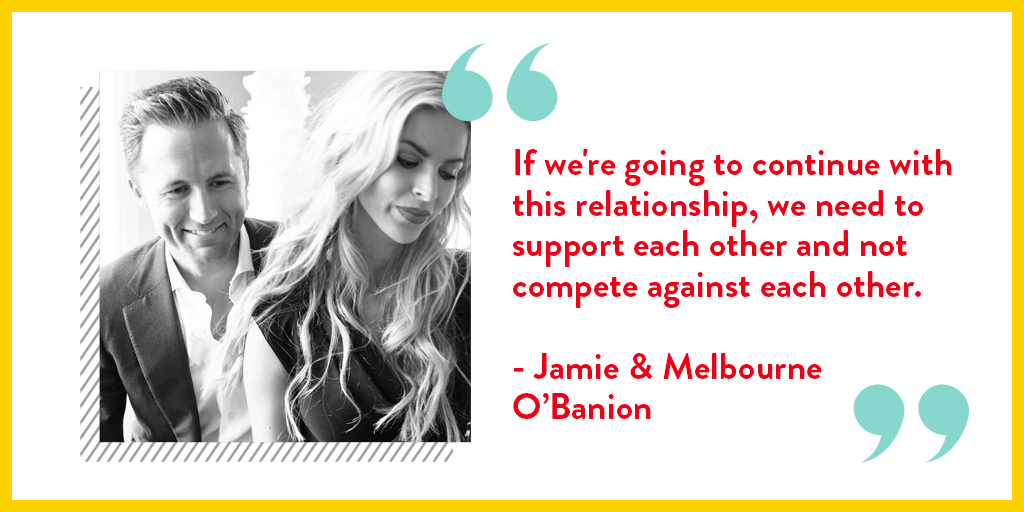Last week, we celebrated the formation of the Johnson family (aka, our wedding anniversary).
It reminded me again of the importance of the ecosystems in which we find, or position ourselves, and the importance of acknowledging the people around us that we take as a given. The “left tackles of our lives.”
These are the people who are there for us, that we don’t always see. I’m often like this with my husband. He provides a safe place for me, a harbor from which I can travel forth to disrupt myself. But, because he’s got my blind side, sometimes I forget what it means to have him there.
I’m also thinking about the interview I recently conducted with Jamie and Melbourne O’Banion–––both are CEOs, both are very driven to succeed.
In our interview, they shared a story about a watershed moment early in their relationship. They were still in college and happened to be taking a class together. Jamie had received what she thought was a superb grade, only to discover that Melbourne’s was superb plus. They realized then that if their relationship was going to work, they could not compete with one another… they had to support one another.
Jamie and Melbourne understood an essential truth – they were one another’s mainstay. In life, they would each be the other’s constant. They would create with one another rather than compete against each other.
I think this is true at work as well. Successful professional partnerships, whether short lived or long term, should ask the question, how will we create versus compete? How will we focus on supporting, propelling the whole to success, rather than focusing on singular achievements?
Recently, I read an HBR article by Joel Podolny and Morten Hansen about Apple’s organizational structure. I was struck by the adherence to this operating principle. Because of the horizontal dependencies, people who are promoted to senior management first must master how to be good collaborators with their peers.
Collaboration builds trust, battles entitlement, and disarms the ever-encroaching ego.
This is further evidenced by research from the Arbinger Institute. They propose that the health of an organization is determined not by how well people manage up or down (where we are inclined to get along with the people ‘above’ or ‘beneath’ us) but with our peers (people to the left or the right). Are we aware and careful about the needs and challenges of people lateral to us? (Learn more in my interview with James Ferrell.)
Which brings me back to our anniversary. I’ve posted some photos at Instagram (@Johnsonwhitney). One in particular, is of my husband and I looking to the horizon. My friend Etta, who I have the privilege of working with in the Relief Society, shared with me the following quote from Anne Morrow Lindberg and Antoine de Saint-Exupéry.
Love does not consist in gazing at each other but in looking outward together in the same direction. For, in fact, man and woman are not only looking outward in the same direction; they are working outward.
Thinking broadly, anyone we live or play or work with is a partner. When we face each other, we may be distracted (think first love). We might also be sizing one other up, getting ready to compete. But, when we look forward to the horizon, we are thinking about moving along the S Curve of creation, a continuous pathway to our and our partner’s potential.
 You can listen to the full episode with Jamie and Melbourne O’Banion here.
You can listen to the full episode with Jamie and Melbourne O’Banion here.
My best,
Whitney

